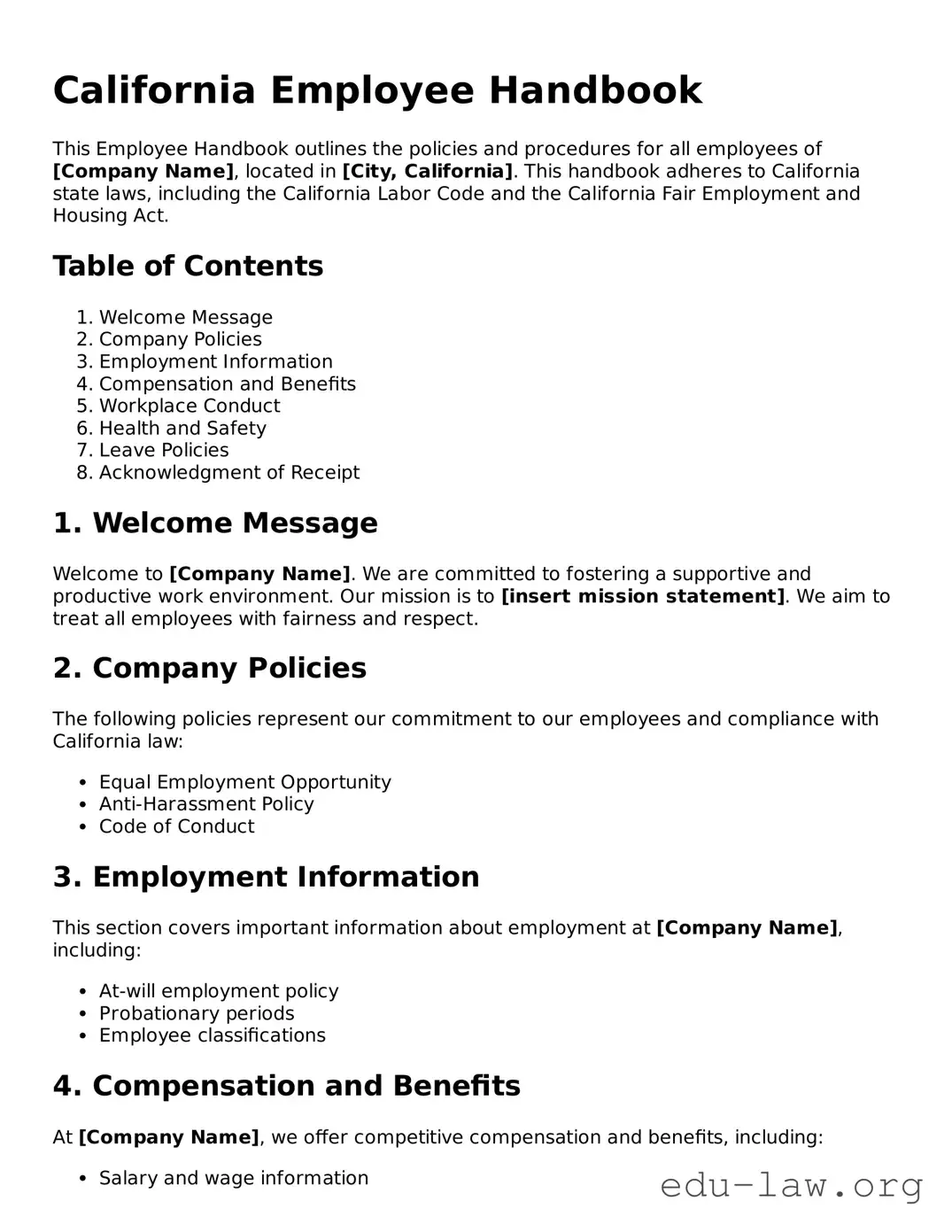What is the California Employee Handbook form?
The California Employee Handbook form is a document that outlines the policies and procedures of an employer, providing essential information to employees about their rights and responsibilities. This handbook serves as a guide to the workplace rules, benefits, and expectations of conduct for all employees in California.
Why is it important to have an Employee Handbook?
An Employee Handbook is crucial because it helps to establish clear guidelines for behavior and company policies. It aids in ensuring compliance with state and federal laws, reduces confusion regarding job expectations, and can protect the employer from potential legal disputes by documenting policies regarding conduct and workplace procedures.
What should be included in the California Employee Handbook?
Essential elements typically include company policies on equal employment opportunity, anti-discrimination policies, workplace safety, benefits information, employee conduct, disciplinary procedures, and termination policies. It may also cover leave policies, dress code, and workplace technology use.
Is it required for California employers to provide an Employee Handbook?
While there is no legal requirement to have an Employee Handbook in California, it is highly recommended. Employers who do not provide clear guidelines may face misunderstandings and can be at higher risk for legal issues related to employee relations.
How often should the Employee Handbook be updated?
The Employee Handbook should be reviewed and updated at least annually or whenever there are significant changes in laws or company policies. Regular updates ensure that all information is current and reflective of the organization’s practices.
Can employees provide input on the Employee Handbook?
Yes, seeking employee input can be beneficial. Involving employees in the process can enhance understanding and acceptance of the policies. However, final decisions on handbook content remain with the employer.
How should the Employee Handbook be distributed to employees?
Once finalized, the Employee Handbook should be distributed to all employees in accessible formats. Consider providing printed copies during orientation, or electronic versions via email or an internal company portal. Ensure that employees acknowledge receipt and understanding of the handbook.
What should I do if I have further questions about the California Employee Handbook form?
If you have further questions, it is advisable to consult with a human resources professional or an employment attorney. They can provide specific guidance relating to the handbook’s content and ensure compliance with applicable laws.
